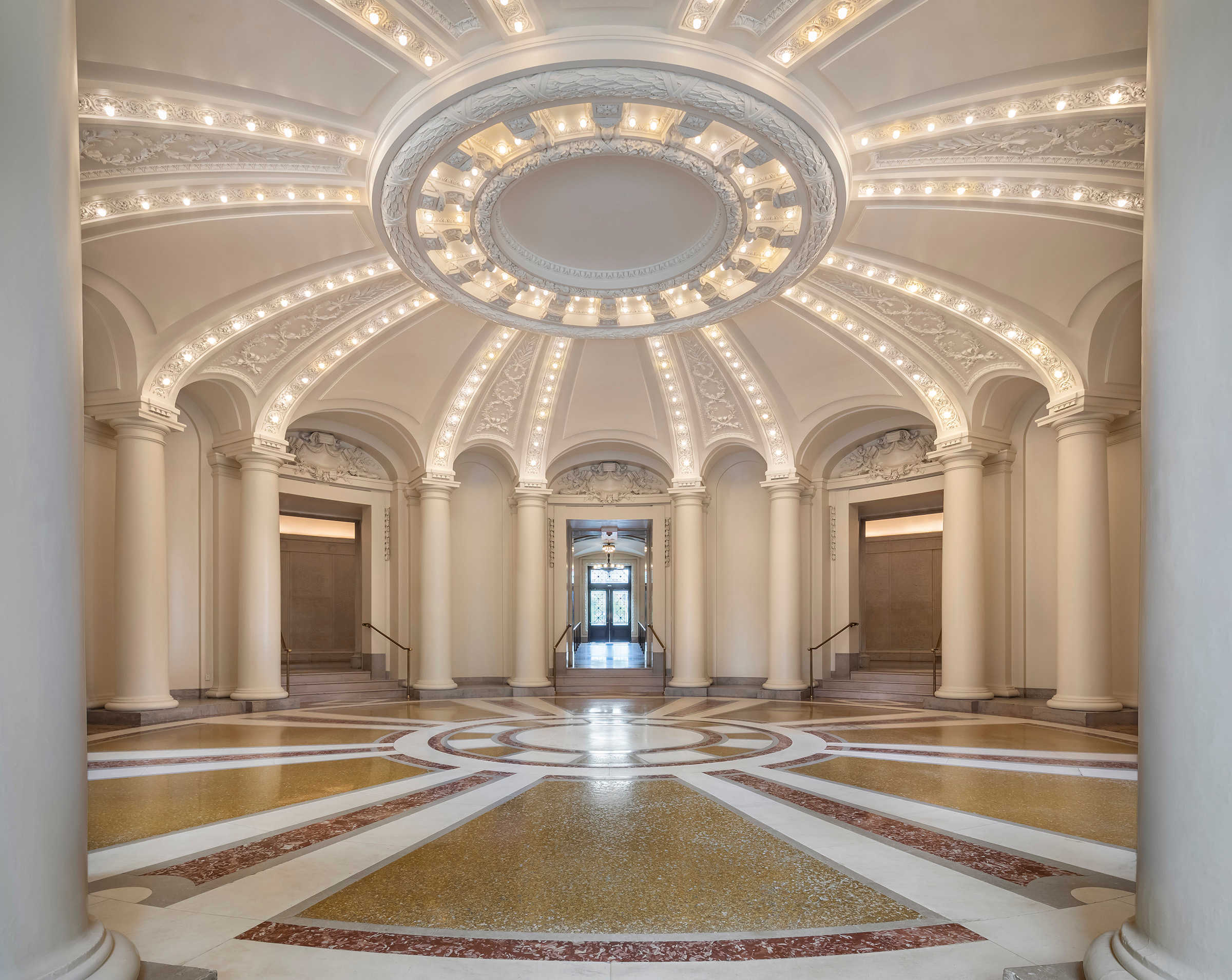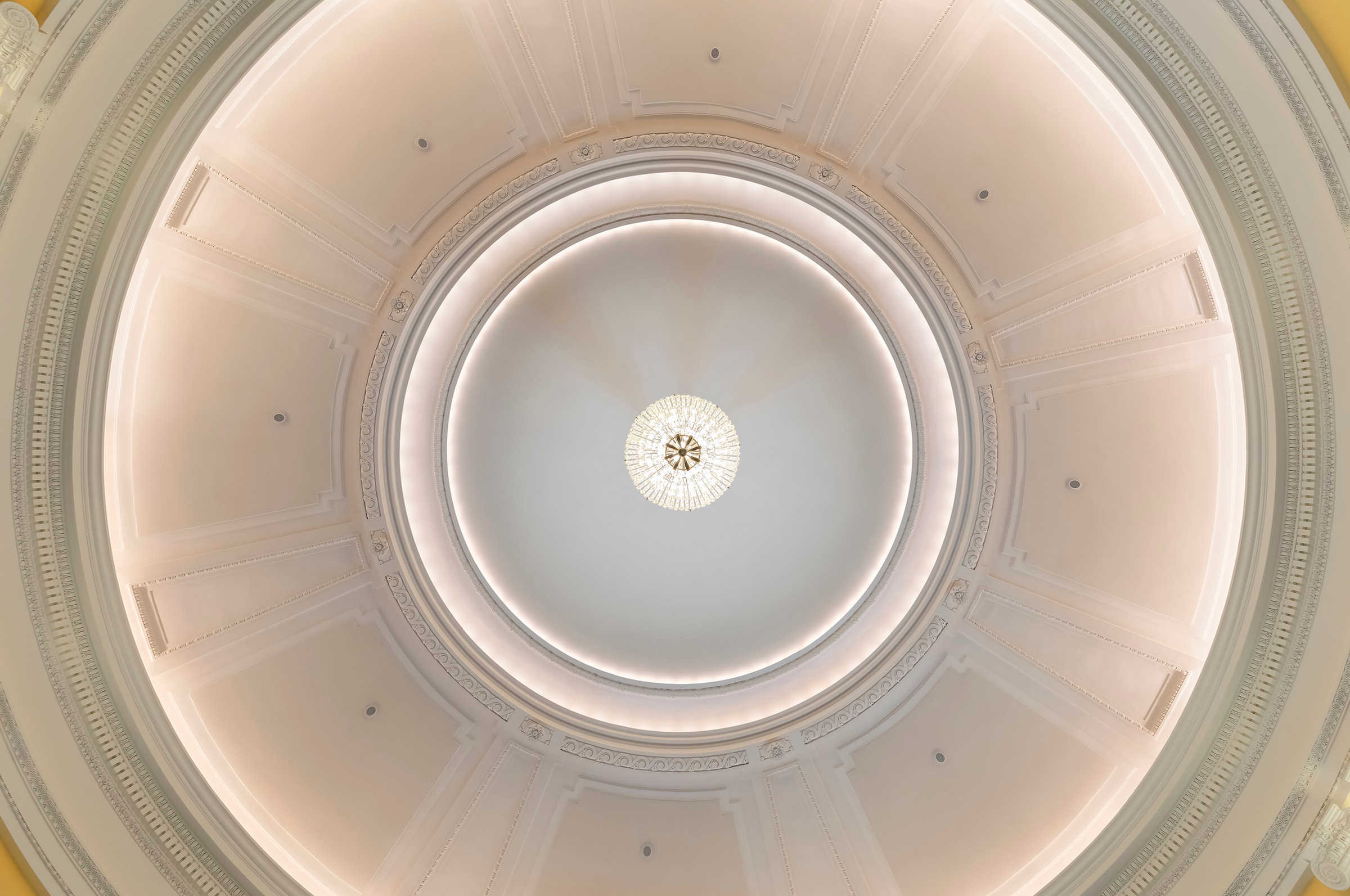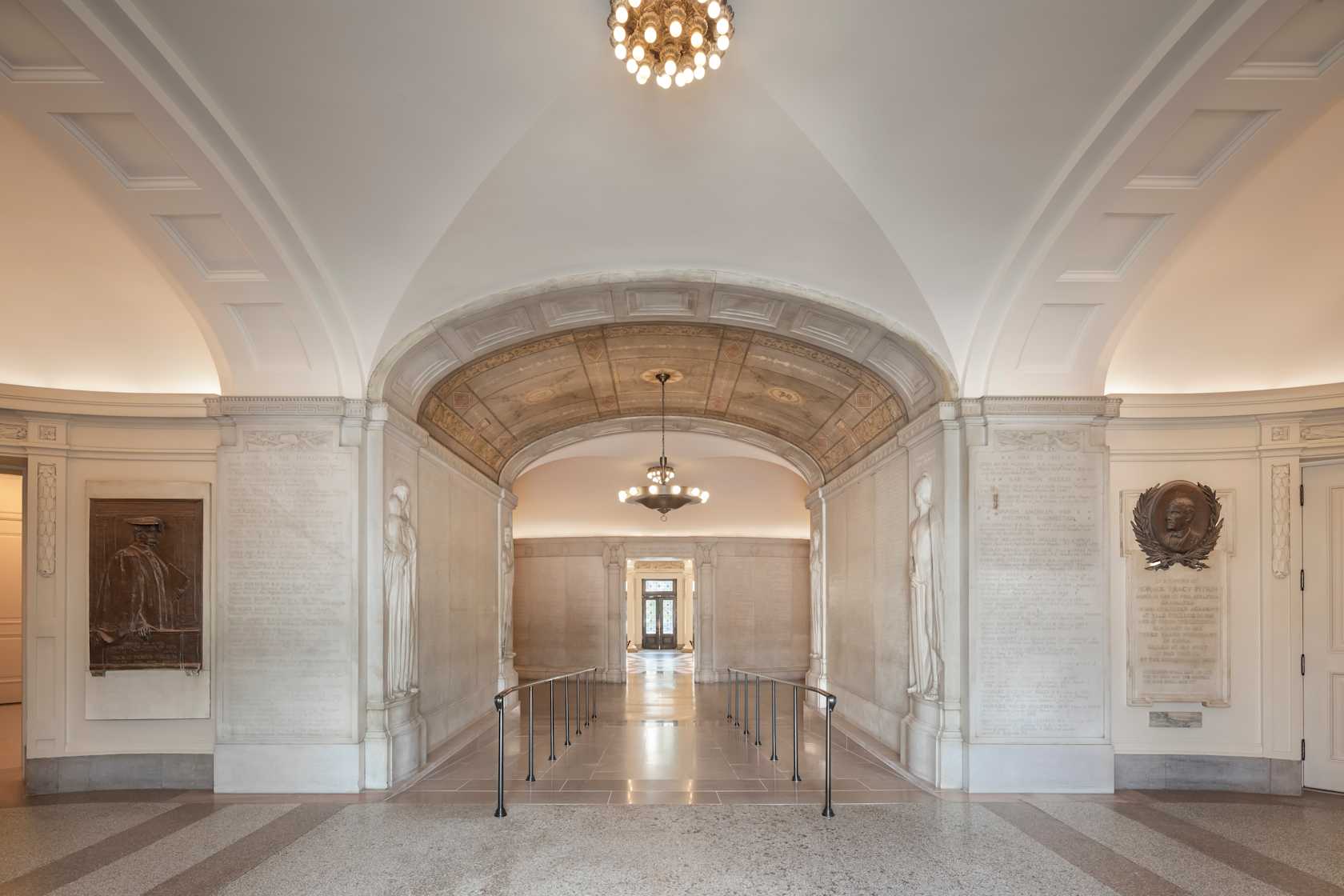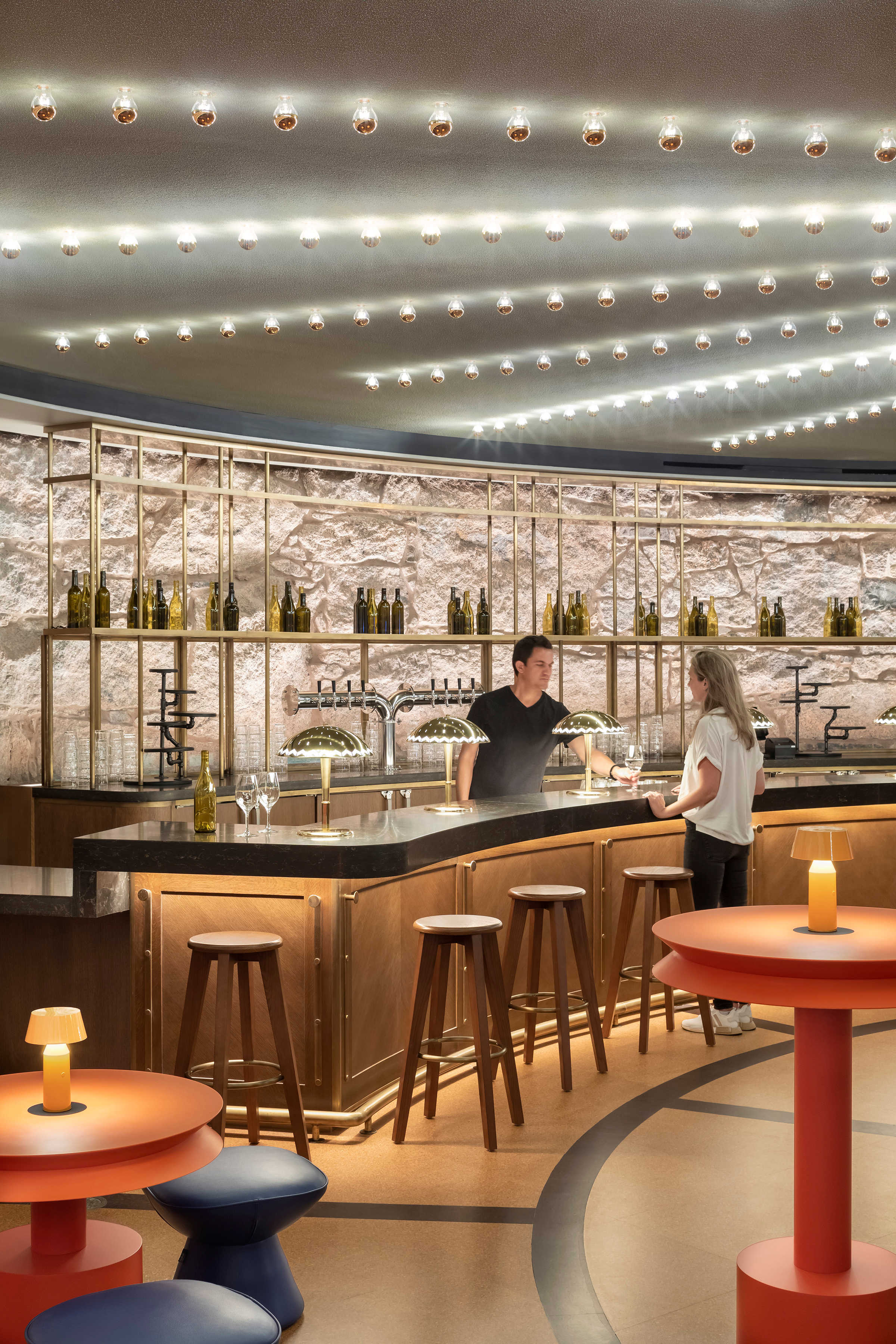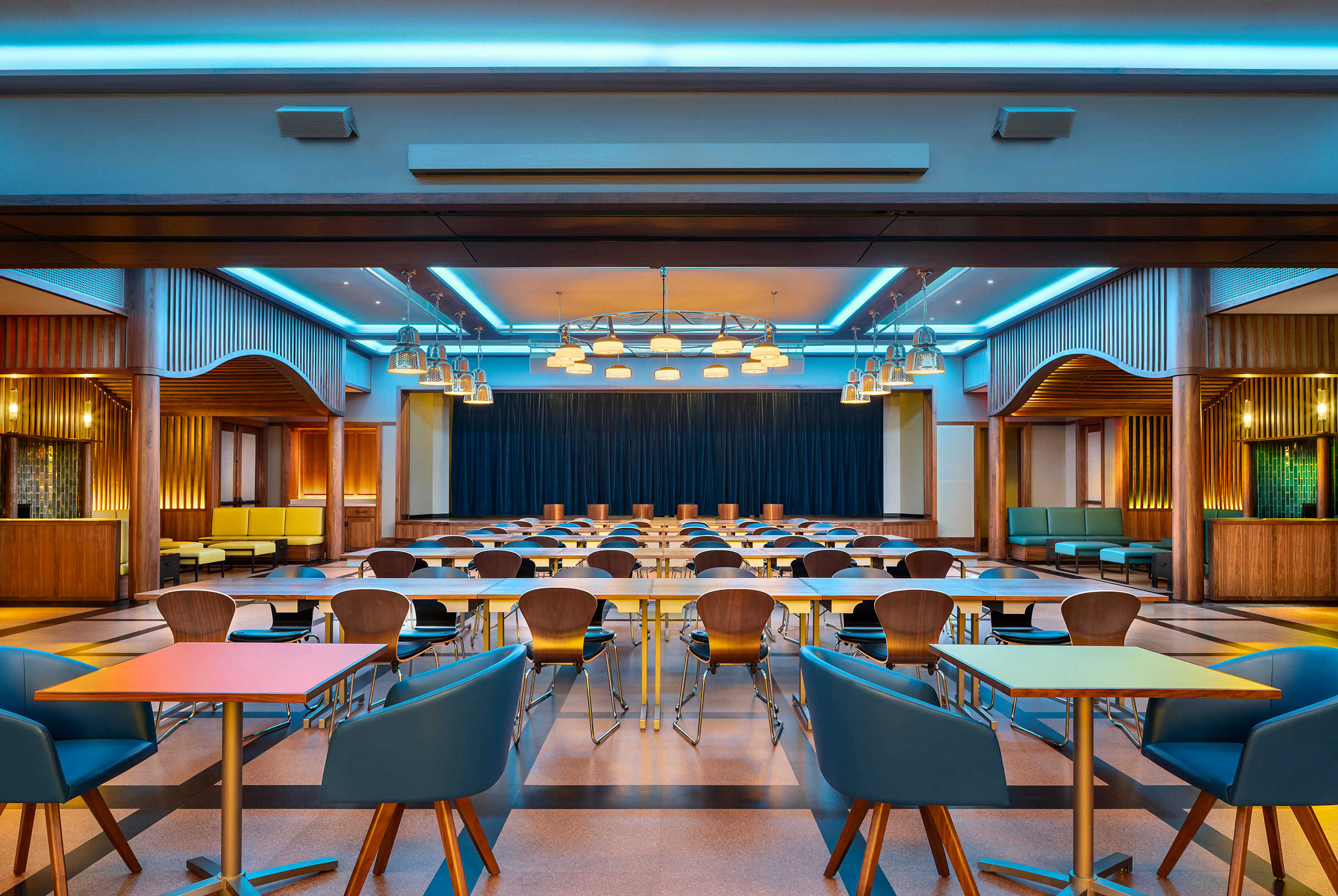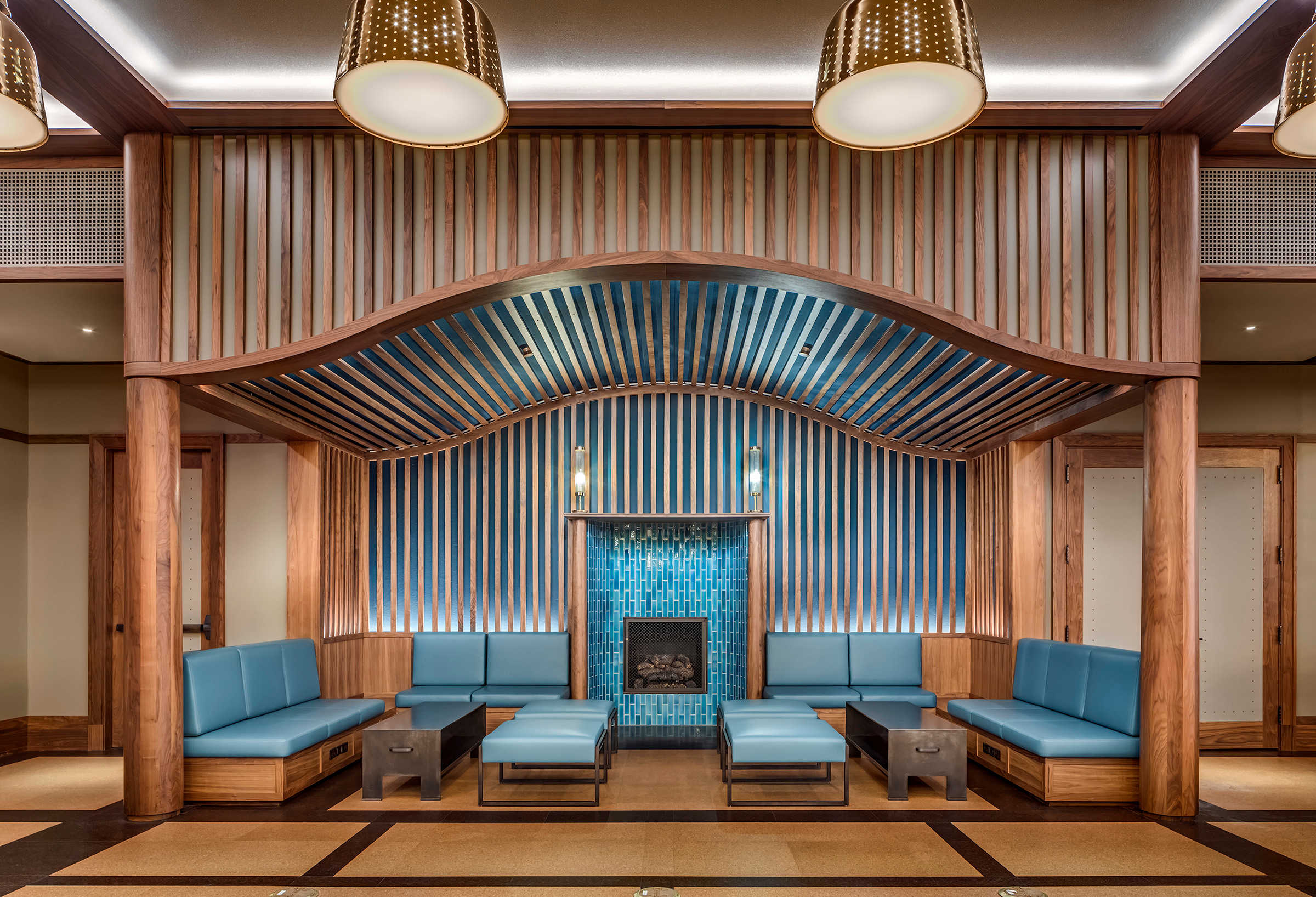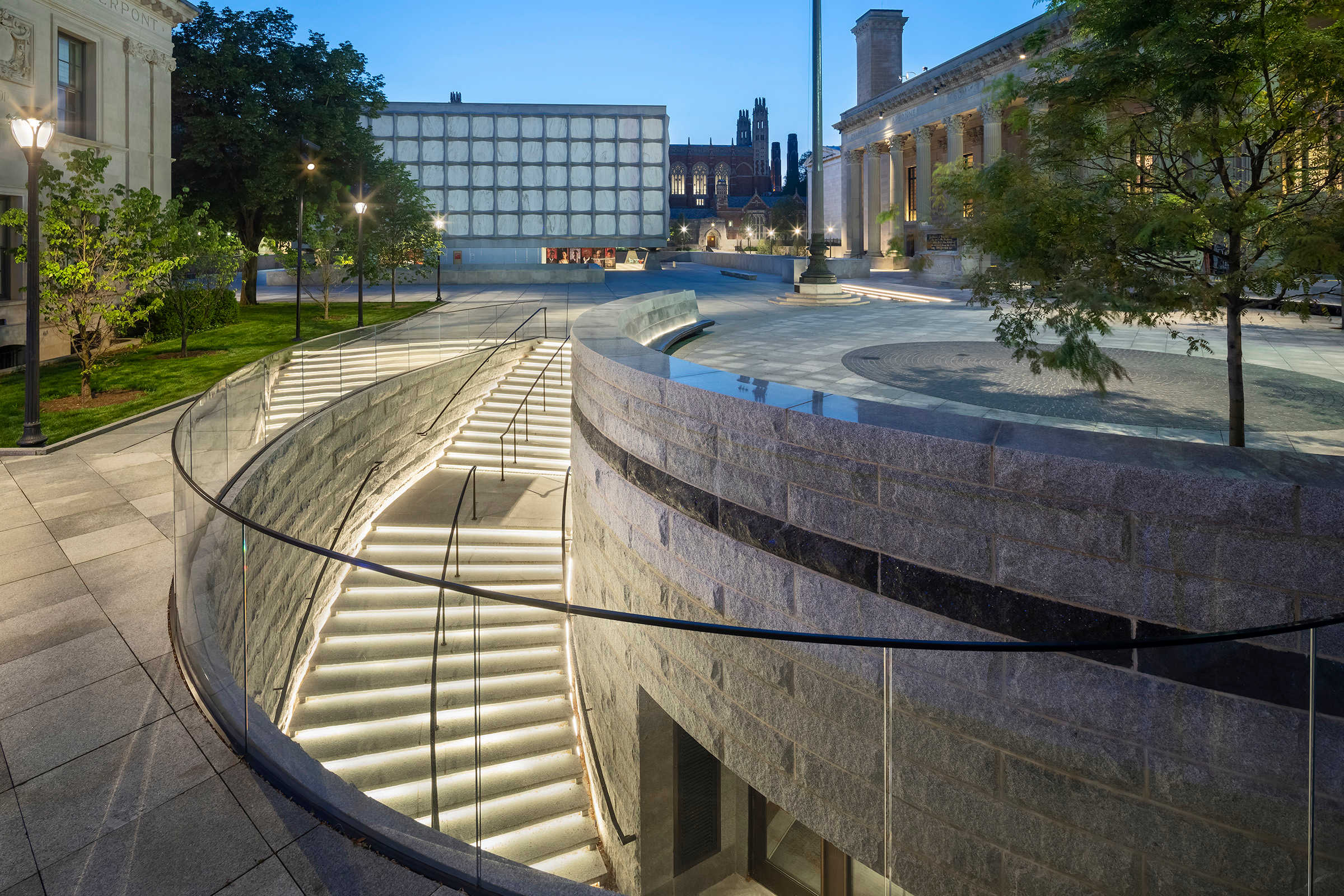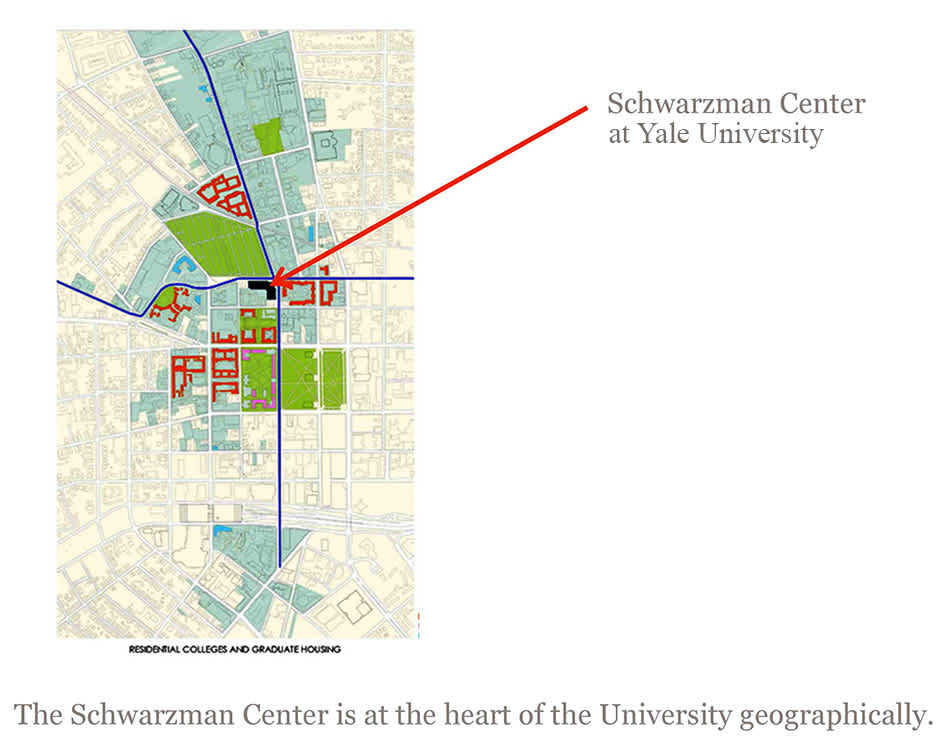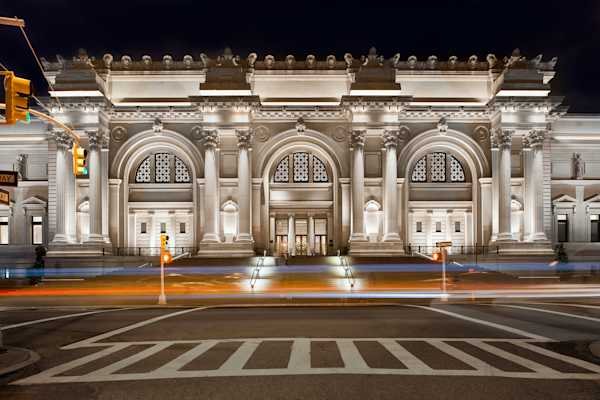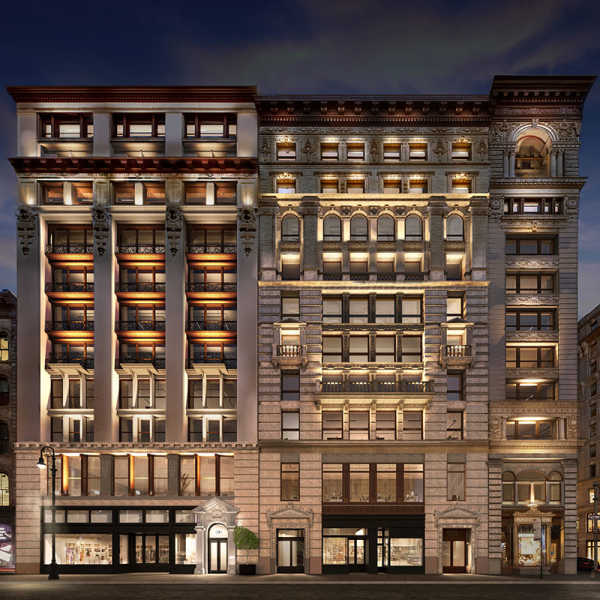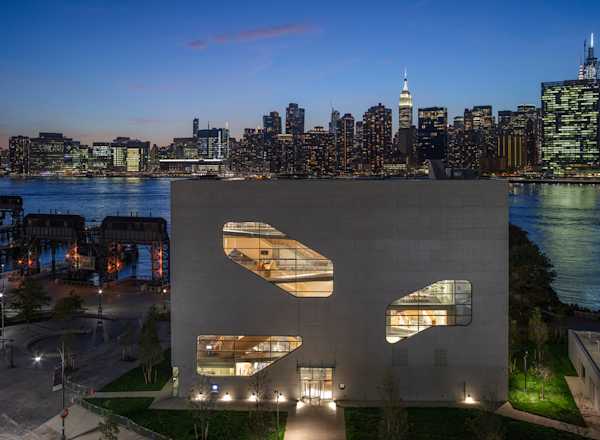The lighting is intentionally dramatic and transitions from cool to warm white to reflect different times of day even without the presence of daylight.
The renovation and extension of the Schwarzman Center at Yale University reinvigorates the existing building and expands the possibilities of this hub for student life. Designed by Robert A. M. Stern Architects, the Center restores and renovates the historic Commons and the adjacent Memorial Hall, both built in 1901 in celebration of the university’s bicentennial, and includes an addition to Grove Street and subterranean spaces.
Yale’s diverse, global student body now has a communal facility that is equally dynamic to host multiple functions at the same time––each space is highly flexible to respond to different modes of use during the day and night. L’Observatoire International was engaged to design the lighting of new and existing interior spaces as well as exterior facade lighting to articulate the beauty of the original building details as well as give the facility a presence and identity at night.
For the site and exterior lighting with its prominent location on Hewitt Quadrangle, the luminous facade celebrates the internal energies of the Schwartzman Center. The two limestone Beaux-Arts style buildings partially shape the Hewitt Quadrangle, alongside the marble facade of the Beinecke Library. The lighting here is in kind with a subtle but necessary addition to draw close attention to the stair that leads to the subterranean spaces below.
The interior work is divided into the refurbishment of existing and the introduction of new spaces that connect by generous circulation corridors that act as galleries and historically significant artifacts such as the Memorial Hall. The grandeur of the Commons dining hall, President’s Room, and Dome Room was restored with several layers of lighting to be able to respond to different functions within each space. The inviting lighting encourages students to share in their common experience through exchange and understanding. In this comfortable space where students can express themselves and interact, the lighting elevates the Center into the true heart of the university.
The introduction of additional communal spaces, such as the Bistro performance and dining space and the Grotto bar lounge, is supported by a rehearsal room and other administration spaces to breathe new life into these underground spaces. The lighting is intentionally dramatic and transitions from cool to warm white to reflect different times of day, even without the presence of daylight. The wing of meeting rooms as part of the Grove Street addition not only expands the capacity of the building but also serves to bring a new presence to the exterior to reactivate the streetscape.
Architect
Robert A.M. Stern Architects, LLPStatus
CompletedDate Completed
2022
Client
Principal
Project Leader
Team
Photo Credit
Francis Dzikowski/Otto



